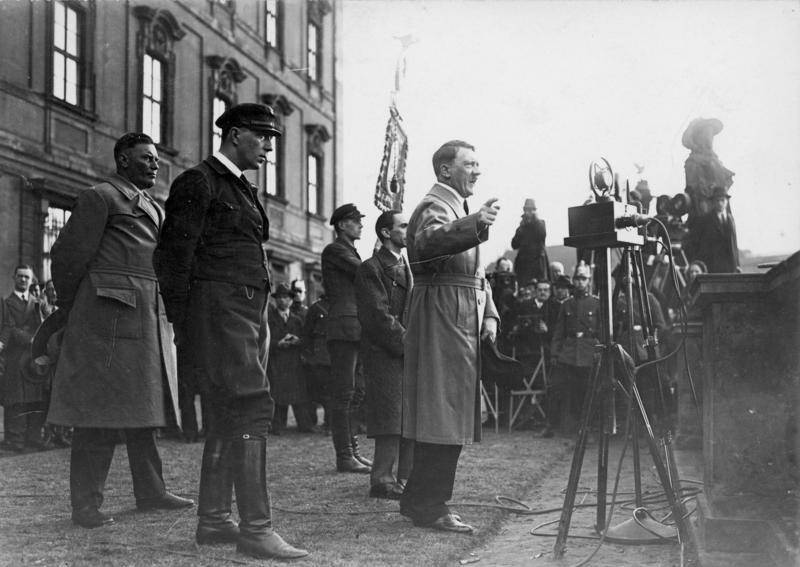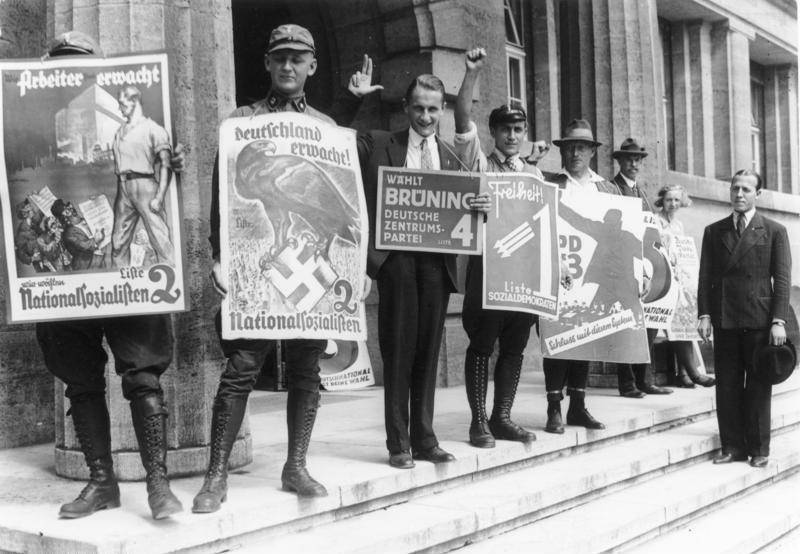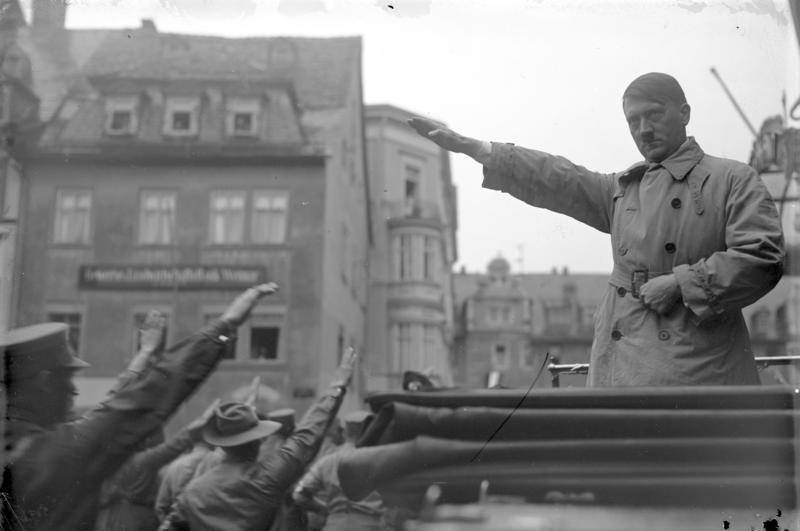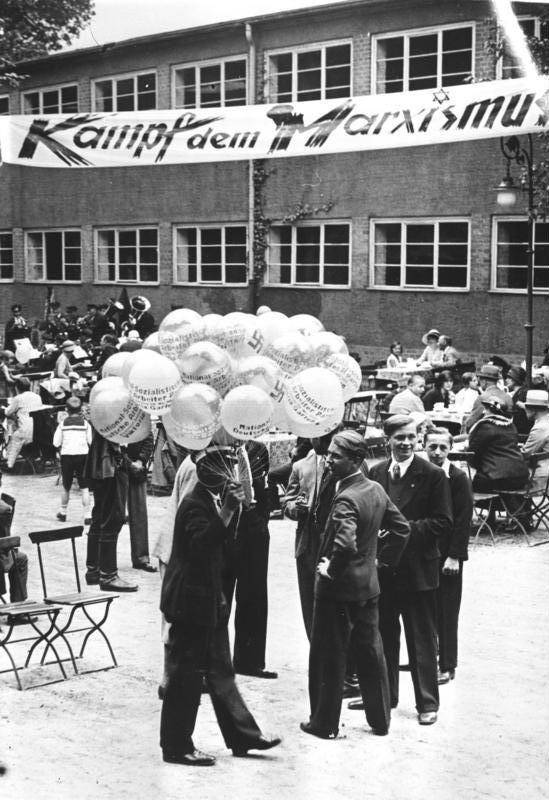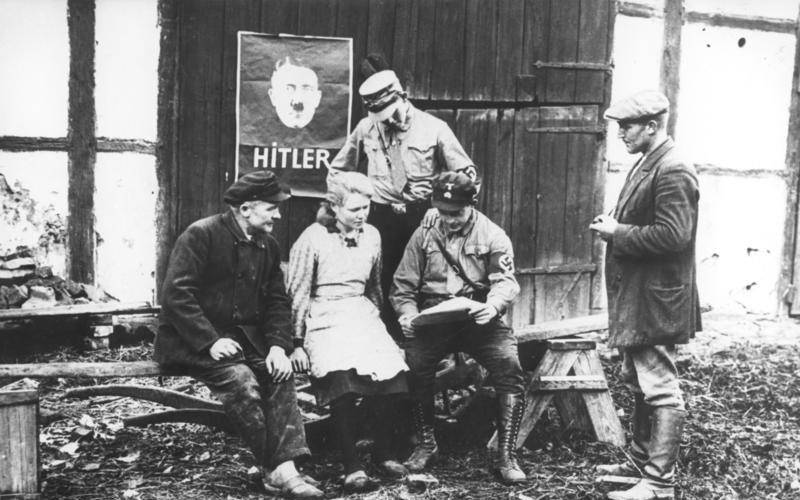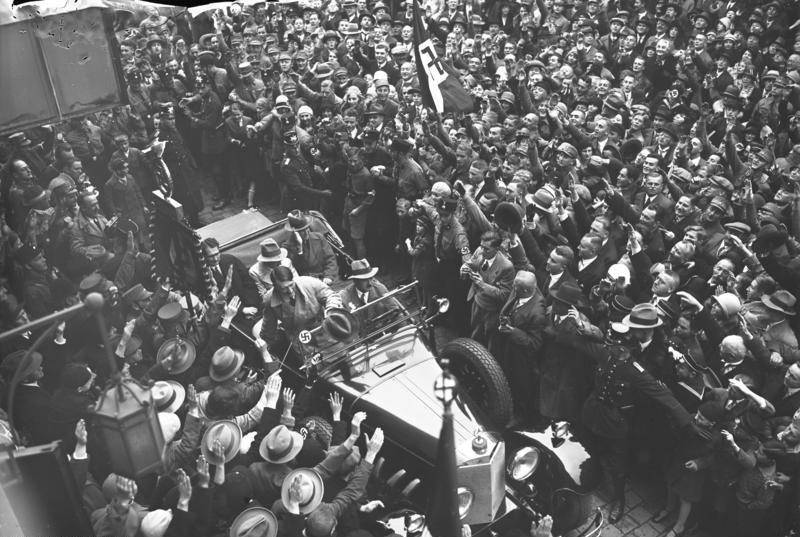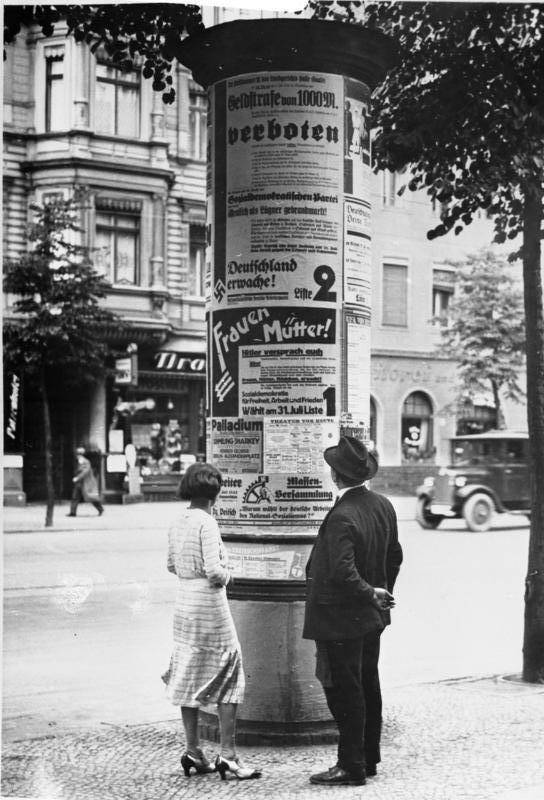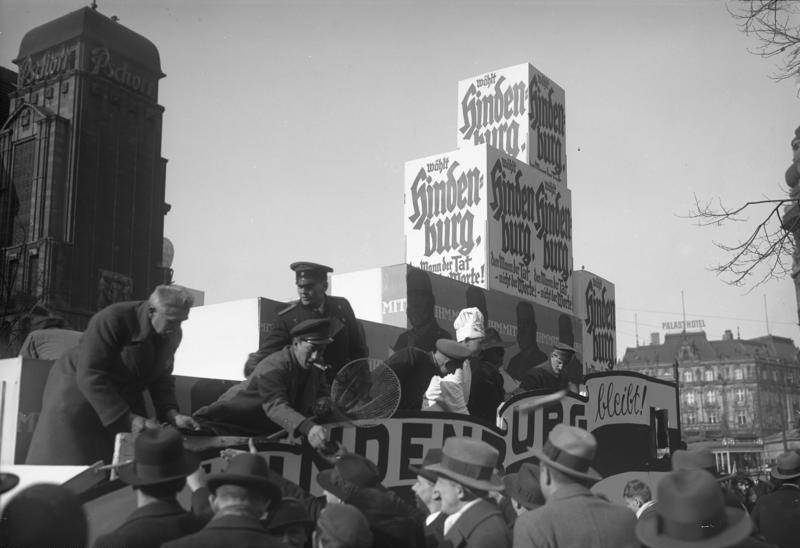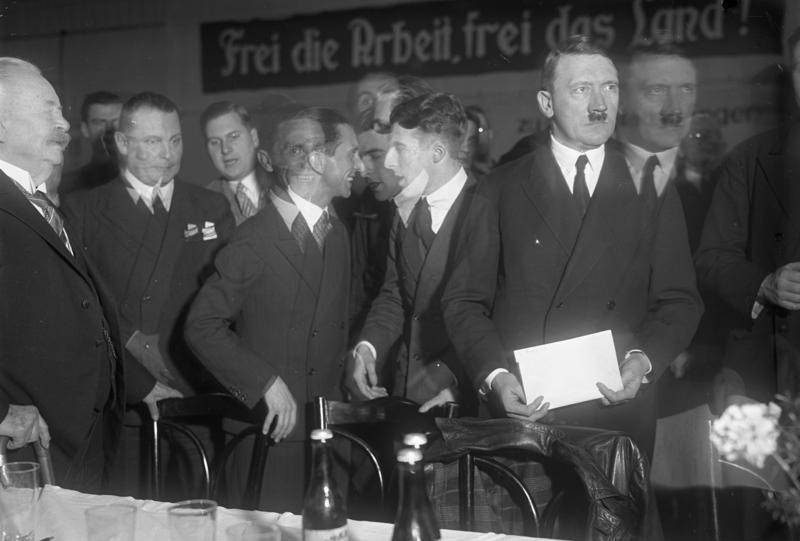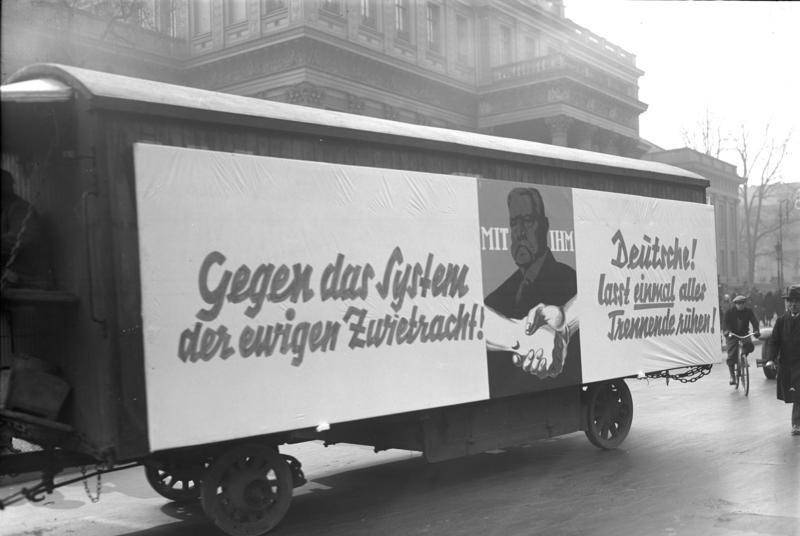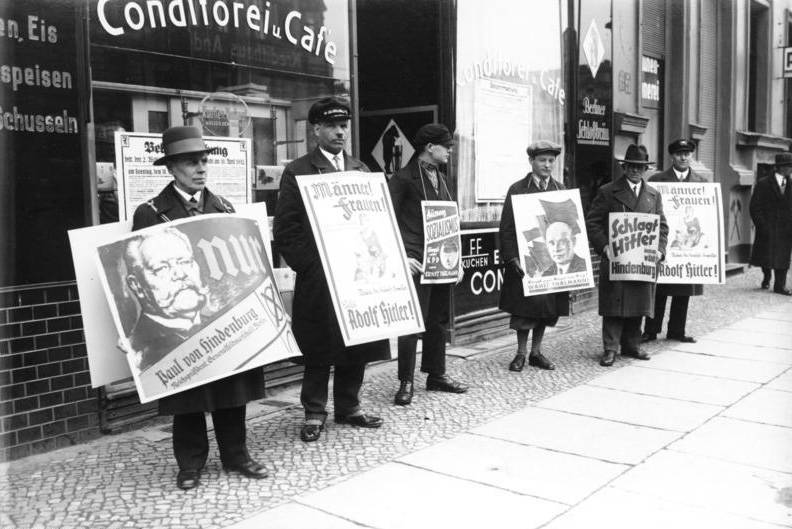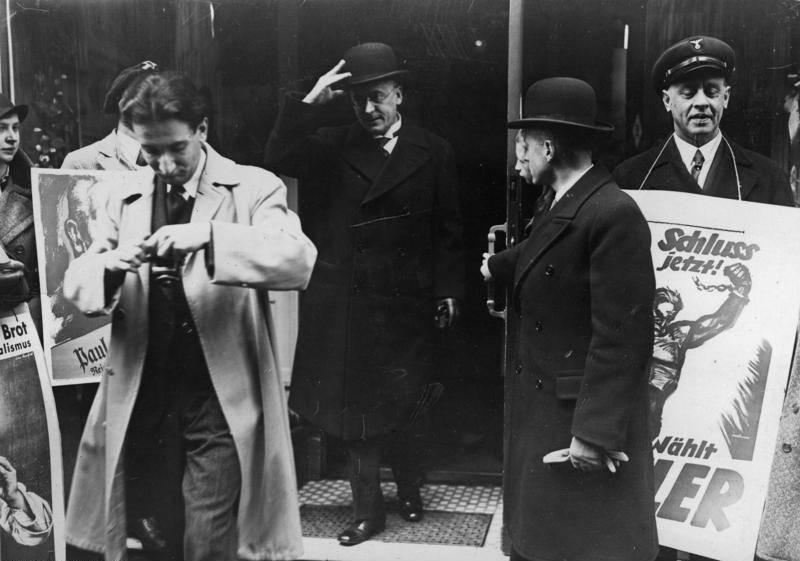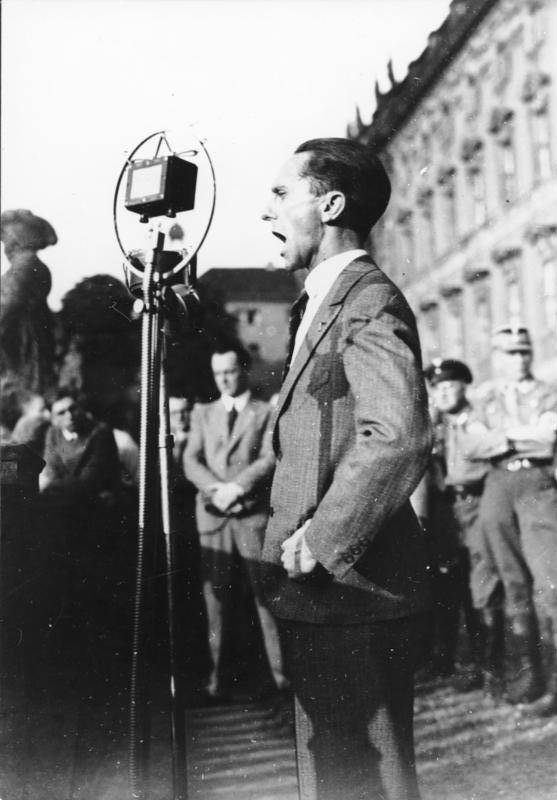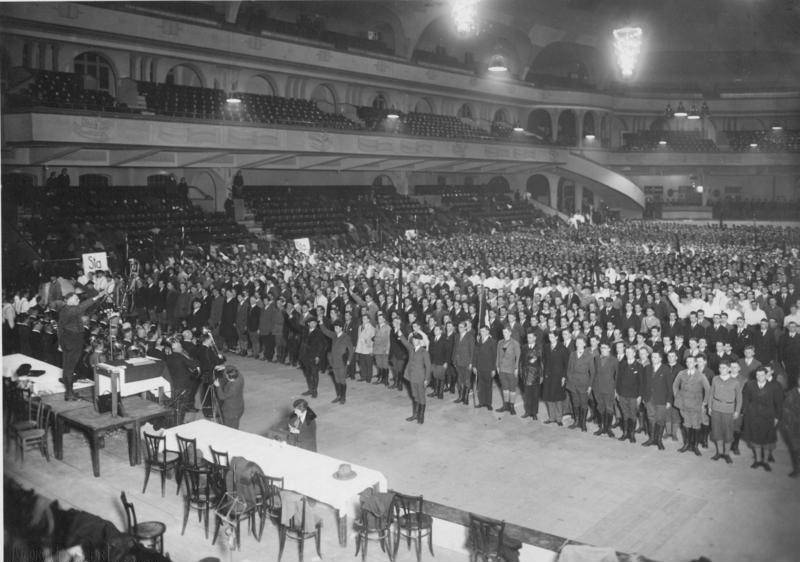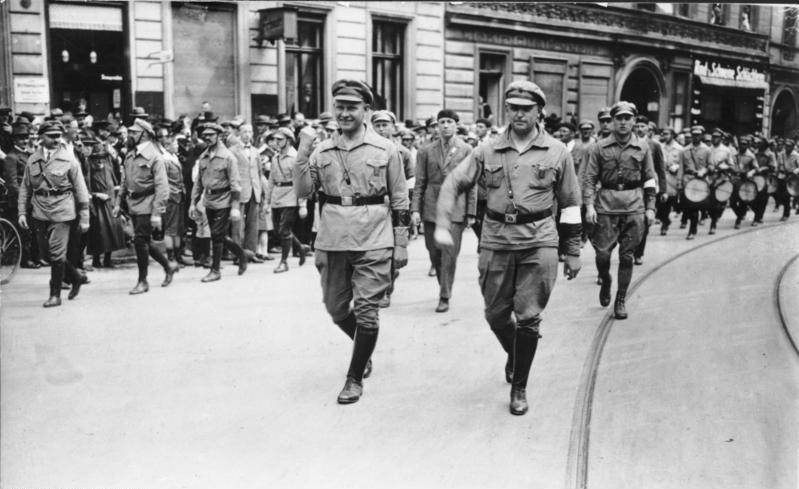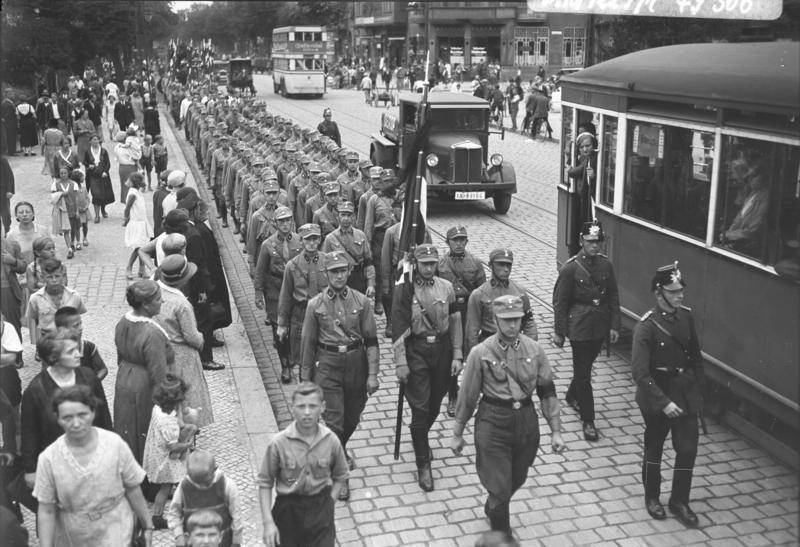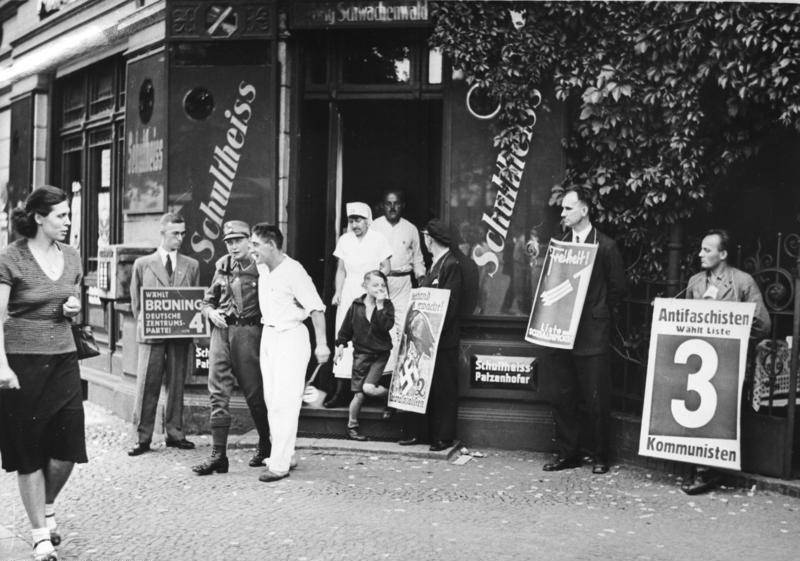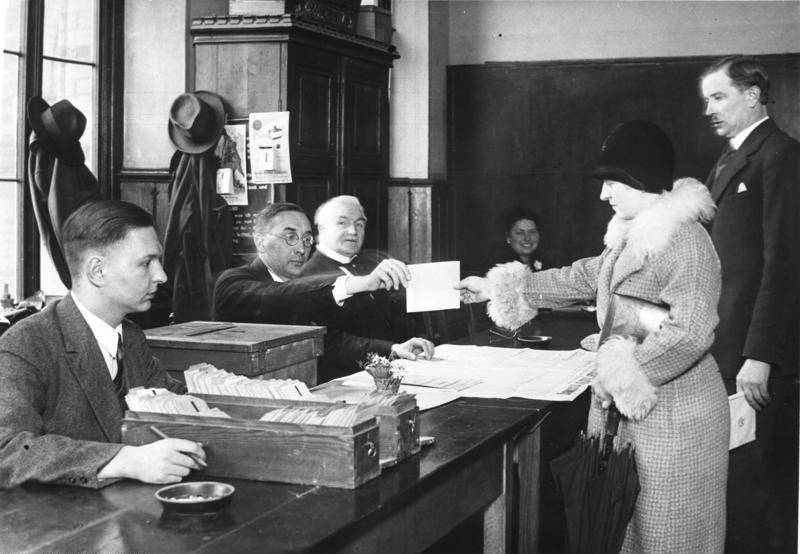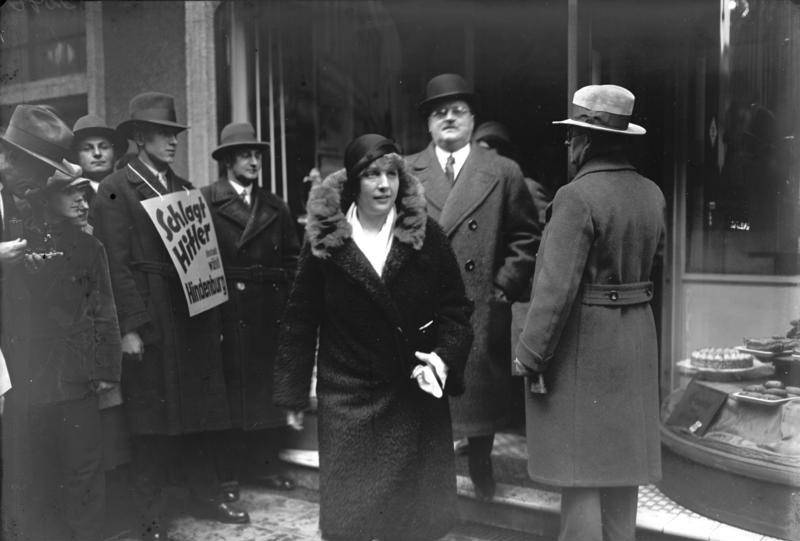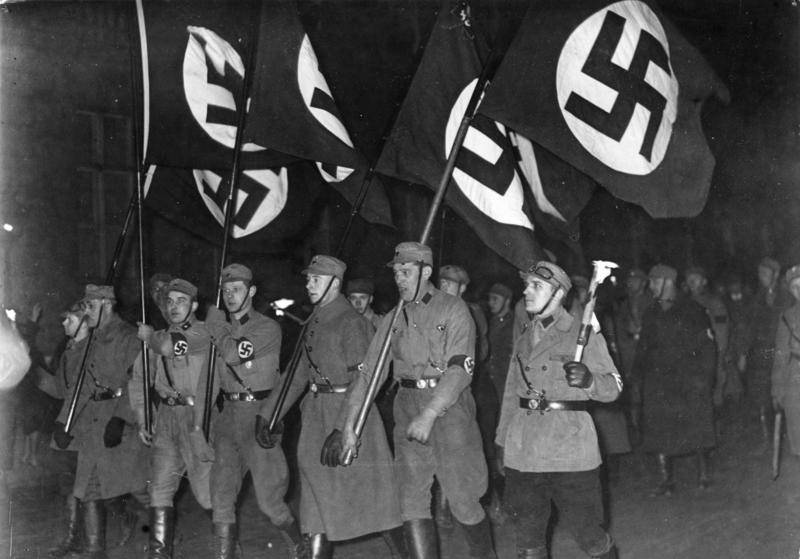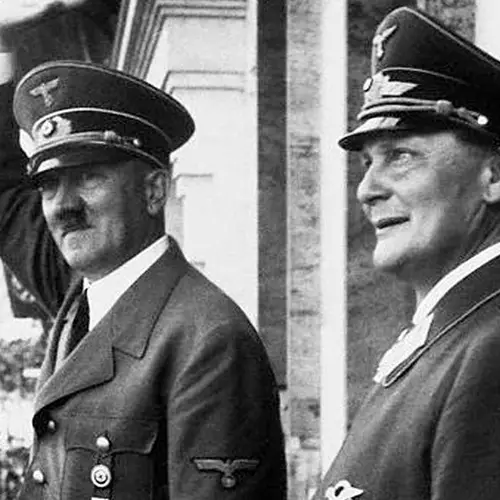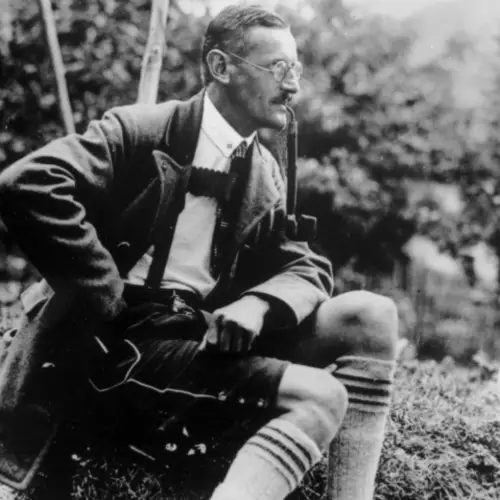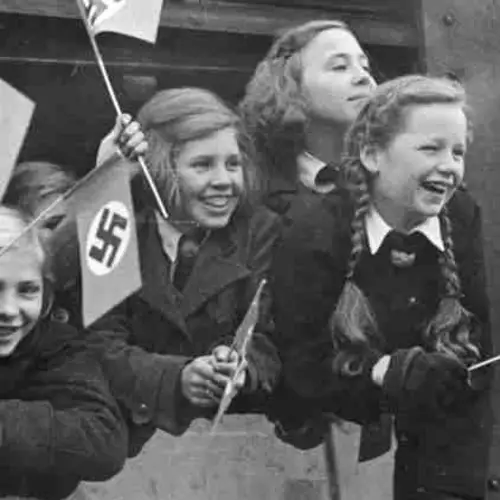1 of 41
Adolf Hitler speaks to a crowd, outlining his vision of a fascist Germany and trying to sway voters.
Berlin. April 4, 1932.Bundesarchiv
2 of 41
Party representatives stand outside a polling station during the federal election, holding their placards high.
Berlin. July 31, 1932.Bundesarchiv
3 of 41
Adolf Hitler salutes his supporters as he drives down the streets of Berlin, celebrating his intention to run in the German presidential election.
February 1932Bundesarchiv
4 of 41
The National Socialist German Workers' Party headquarters courts voters by passing out balloons with tiny swastikas.
Berlin. 1932.Bundesarchiv
5 of 41
Hitler's paramilitary "Brownshirts" sit down with a farmer and his wife and try to persuade them to vote Nazi.
Mecklenburger, Germany. June 21, 1932.Bundesarchiv
6 of 41
A crowd of supporters swarm around Hitler's car.
Weimar, Germany. October 1930.Bundesarchiv
7 of 41
Two men put up a poster calling on people to vote for Hitler in the presidential election.
Mecklenburg, Germany. June 21, 1932.Bundesarchiv
8 of 41
Hitler and his Sturmabteilung paramilitary group lead a massive rally of supporters.
The Sturmabteilung, today often called the "Brownshirts," would serve as hired thugs for the Nazi Party, keeping their rallies safe and disrupting the rallies of other parties.
Nuremberg, Germany. Circa 1928.Wikimedia Commons
9 of 41
Joseph Goebbels addresses a massive crowd that has come out to support the Nazi Party.
Berlin. 1932.Bundesarchiv
10 of 41
A couple look over the campaign signs that have taken over a street post, including a small swastika up in the corner.
Berlin. July 31, 1932.Bundesarchiv
11 of 41
Earlier in Hitler's political career, a crowd of people fill a Munich beer hall to hear him speak.
1925.Bundesarchiv
12 of 41
Joseph Goebbels, the Nazi head of propaganda, waves at Hitler as he passes by in his car.
Weimar, Germany. October 1930.Bundesarchiv
13 of 41
Adolf Hitler and Nazi Party representatives pose together for a photograph while planning their election campaign.
Munich. December 1930.Bundesarchiv
14 of 41
The massive crowd of supporters that came out to see the Nazi Party leaders speak, seen from above.
Berlin. April 4, 1932.Bundesarchiv
15 of 41
A man steps out of the polling station, having cast his vote. Behind him, a man holds up a poster with Hitler's face.
Berlin. March 13, 1932.Bundesarchiv
16 of 41
Voters cast their ballots at Potsdamer Platz, where a sign asking people to vote for Hitler hangs above the entrance.
Berlin. March 1932.Bundesarchiv
17 of 41
A truck drives by, covered in propaganda calling on the people to keep Paul von Hindenburg as President of Germany — and keep the fascists out.
Berlin. March 1932.Bundesarchiv
18 of 41
Chancellor Heinrich Brüning speaks to a crowd, urging them to vote for Paul von Hindenburg and keep Hitler out of power.
Berlin. March 1932.Bundesarchiv
19 of 41
Hitler prepares to make a speech.
Berlin. January 1932.Bundesarchiv
20 of 41
A truck for President Paul von Hindenburg drives down the streets, warning the people that a vote for Hitler is a vote for "eternal discord."
Berlin. April 1932.Bundesarchiv
21 of 41
Crowds come out to cast their ballots in the first round of the presidential election.
Hitler lost this election — but he didn't stay out of power for long. As soon as it was over, he started campaigning for the federal election, after which his party would come into power a mere four months later.
Berlin. March 13, 1932.Bundesarchiv
22 of 41
As the final votes are cast in the presidential election, supporters of each candidate make one last bid to sway the voters.
Berlin. April 10, 1932.Bundesarchiv
23 of 41
Chancellor Heinrich Brüning steps out of the polling station after casting his vote against Hitler.
Brüning's vote would help keep Hitler from winning the presidency for the moment — but Hitler would take his spot as chancellor, instead, shortly after.
Berlin. April 10, 1932.Bundesarchiv
24 of 41
The Nazi Party lost the presidential election, but they didn't give up. The federal election — and Hitler's shot at becoming chancellor — was just around the corner.
Here, Joseph Goebbels addresses a massive crowd of supporters, urging them to cast their vote for fascism. One of the signs promises that voting for fascism will give them a "voice."
Berlin, Germany. April 7, 1932.Bundesarchiv
25 of 41
Joseph Goebbels yells into his microphone, addressing his crowd of supporters.
Berlin. July 1932.Bundesarchiv
26 of 41
A campaign truck urges voters to cast their ballots for the DNVP: the German National People's Party.
A vote for the DNVP would prove little different from a vote for the Nazi Party. The two parties would form a coalition after the election, with Hitler in charge.
Berlin. 1932.Bundesarchiv
27 of 41
The German National People's Party in an earlier election, drives through the streets with an anti-semitic poster on their truck.
Reichstagswahl, Germany. 1930.Bundesarchiv
28 of 41
Germany's Communist Party, the KPD, deck out their campaign office with signs warning of the dangers of voting for Hitler.
After Hitler came into power, he would get his revenge. He blamed the Reichstag fire on the KPD and purged them with executions during the "Night of the Long Knives" in 1934.
Berlin. 1932Bundesarchiv
29 of 41
The Democratic Parties, united under a single banner, drive through the streets of Germany trying to rally the people to keep the fascists and the communists out.
Reichstagswahl, Germany. August 1930.Bundesarchiv
30 of 41
The "Brownshirts" keep people in line at a Nazi Party rally.
Berlin. April 1931.Bundesarchiv
31 of 41
Adolf Hitler salutes his Sturmabteilung.
Brunswick, Germany. April 1932.Bundesarchiv
32 of 41
The RFB, the Communist Party's equivalent to the Sturmabteilung, patrol the streets looking for Nazis to fight.
Berlin. June 5, 1927.Bundesarchiv
33 of 41
The "Brownshirts" throw a parade, making a show of force to intimidate and sway voters toward Hitler.
Spandau, Germany. 1932.Bundesarchiv
34 of 41
Political parties set up shop outside of a restaurant, trying to sway the customers' votes.
Berlin. 1932.Bundesarchiv
35 of 41
Kurt von Schleicher, the new Chancellor of Germany, takes one last look at the placards before casting his vote.
Hitler would win the election, which, traditionally, would make him the obvious choice to replace Schleicher as chancellor. President Hindenburg, however, kept Schleicher as Chancellor of Germany for a few months longer. The decision infuriated the Nazi Party and their supporters who, somewhat ironically, saw Hindenburg's move as undemocratic. Soon after, Schleicher was pressured into stepping down and letting Hitler take his spot.
Berlin. March 5, 1933.Bundesarchiv
36 of 41
A woman casts her vote in the election that would ultimately give power to the Nazis.
Brunswick, Germany. 1932.Bundesarchiv
37 of 41
A man steps out of the polling station after casting his vote.
Berlin. 1932.Bundesarchiv
38 of 41
Nazi supporters march in celebration after hearing that Hitler has been appointed Chancellor of Germany.
Berlin. January 30, 1933.Bundesarchiv
39 of 41
Newly-appointed Chancellor Adolf Hitler, at the window of the Chancellery, waves at his supporters.
Berlin. January 30, 1933.Bundesarchiv
40 of 41
The Nazi Party, now in charge, campaign to consolidate their power into a complete dictatorship.
The sign reads, "One vote, one Fuhrer, one yes."
Berlin. November 1933.Bundesarchiv
41 of 41
Like this gallery?
Share it:
